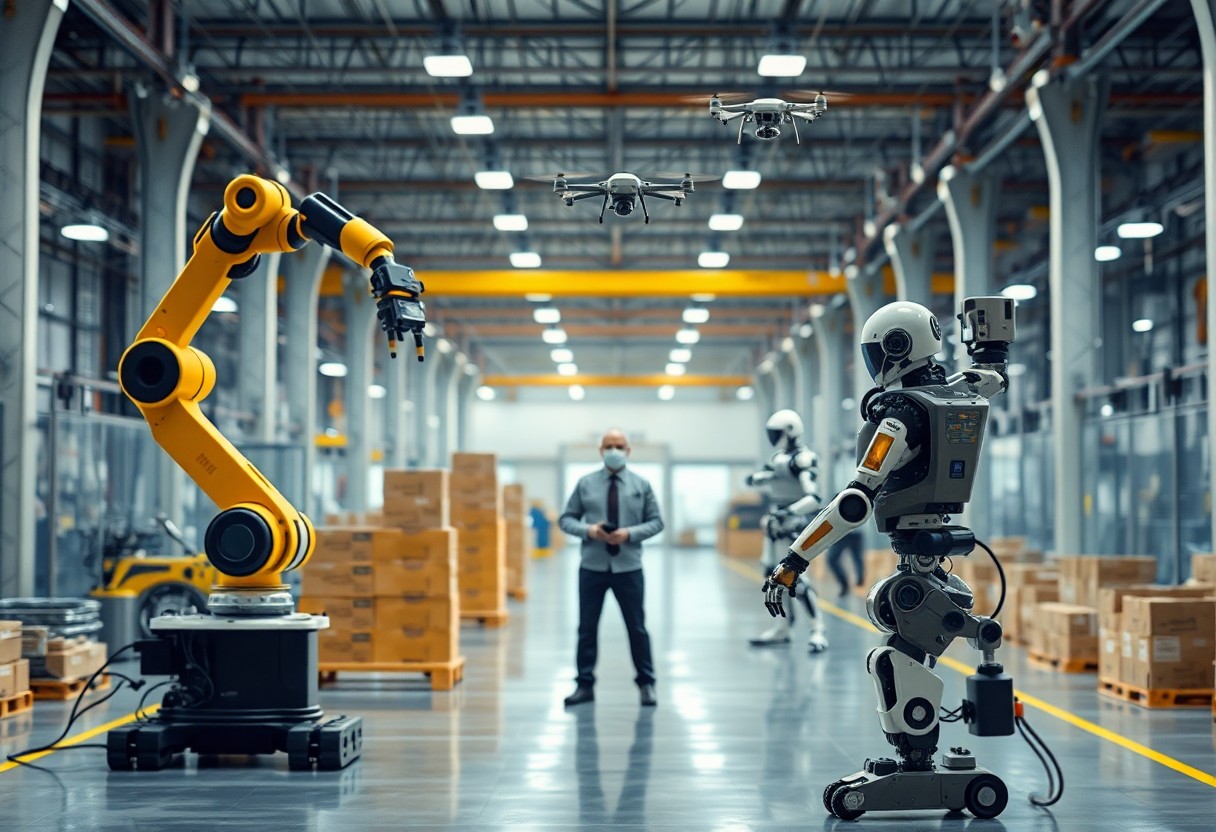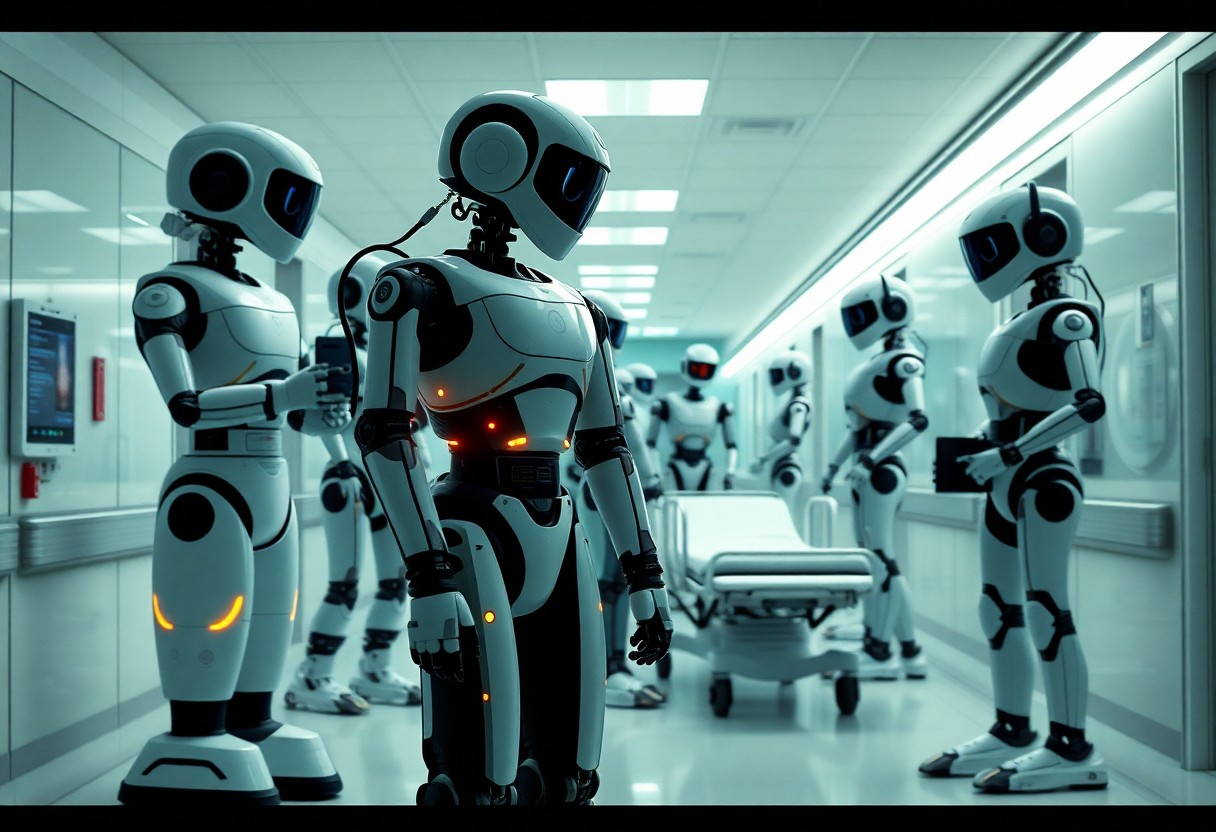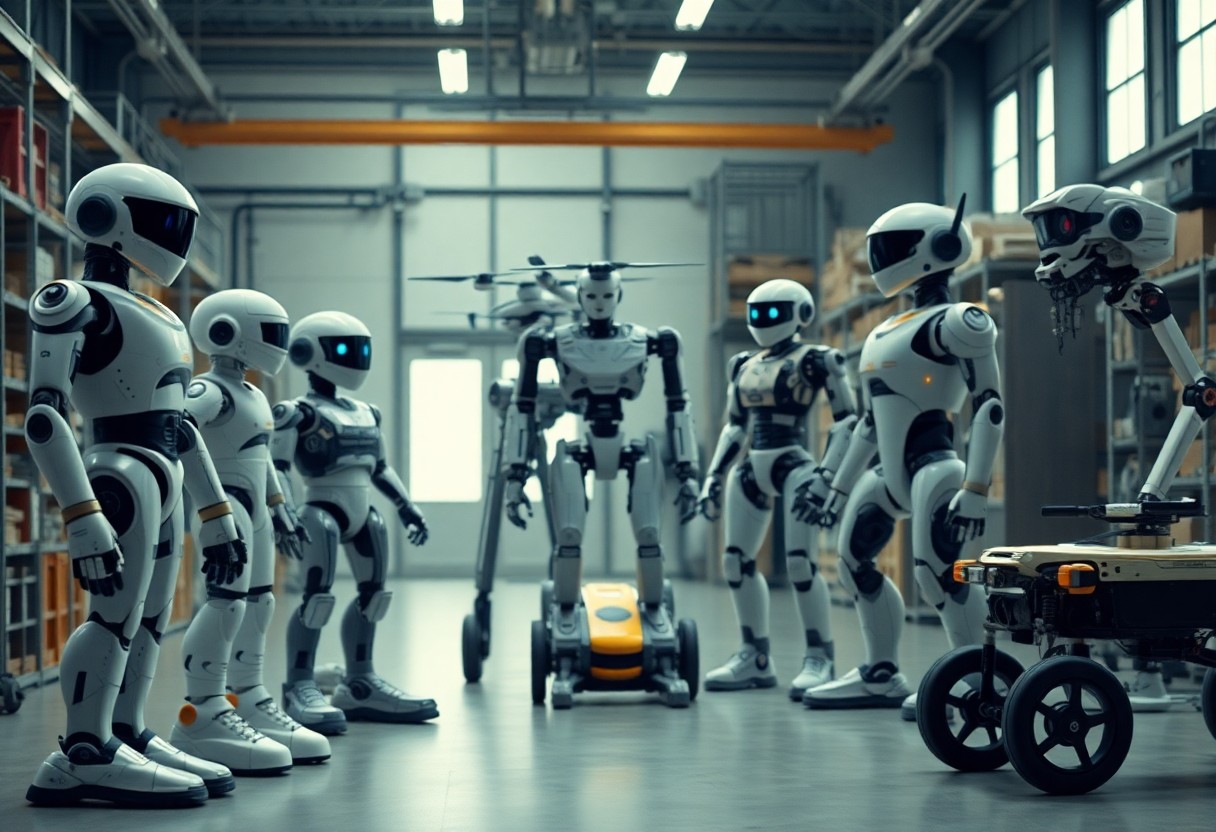You may not realize it, but robots are becoming an integral part of your daily life, influencing everything from your home to the workplace. In this post, you’ll discover 10 distinct types of robots that are shaping the world around you. Whether you’re curious about industrial automation, household helpers, or even social companions, understanding these diverse machines can deepen your appreciation and insight into technology’s role in your life. Let’s explore the fascinating realm of robots and see which ones you should know about!
The Emergence of Autonomous Assistants
As technology advances, autonomous assistants are becoming an integral part of your daily life. Designed to operate independently, these robots streamline tasks and enhance productivity, allowing you to focus on what truly matters. From personal helpers that manage your schedule to devices designed for household chores, these machines are reshaping your environment and routines in ways you might not even notice.
Everyday Helpers: Robot Vacuums
Robot vacuums have gained immense popularity as efficient everyday helpers in your home. These compact devices navigate your living spaces, detecting dirt and debris while automatically avoiding obstacles. With programmable features and smart technology, you can enjoy a cleaner home without lifting a finger.
The Future of Household Robotics
The future of household robotics promises even greater integration and efficiency in your daily chores. Innovations in artificial intelligence and machine learning will allow these robots to learn your preferences, adapt to your household layout, and predict cleaning needs. Imagine having a robotic assistant that can not only vacuum but also perform laundry, dishes, or organize your belongings with ease, transforming your home into a smart living space.
As developments in robotics continue to unfold, the potential for household helpers expands beyond simple tasks. You might find yourself with robots that can cook your meals, manage your shopping lists, or even help with fitness routines. Increased connectivity and enhanced AI capabilities will make these devices more intuitive and responsive to your lifestyle, ensuring that they are not just machines, but companions that improve your quality of life.

Industrial Revolution 4.0: Robots in Manufacturing
As we enter Industrial Revolution 4.0, the manufacturing landscape is undergoing a significant transformation powered by robots. These machines are not just enhancing productivity; they are reshaping processes and redefining the way you think about production lines. Integrating advanced robotics with IoT and AI, modern manufacturing allows for increased efficiency, reduced operational costs, and better quality control, all tailored to create a more agile and responsive manufacturing environment.
Collaborative Robots: Redefining Human-Robot Interaction
Collaborative robots, or cobots, are designed to work alongside you and your team, enhancing efficiency and safety in the workplace. Unlike traditional robots, which often operate in isolation, cobots are equipped with advanced sensors that enable them to interact intuitively with human workers. This collaboration facilitates a seamless integration of human skills and robotic precision, leading to improved productivity and reduced strain on employees.
AI-Driven Automation: The Backbone of Modern Factories
AI-driven automation is at the heart of today’s advanced manufacturing systems. By harnessing machine learning and data analytics, you can optimize production processes, predict maintenance needs, and enhance decision-making. This technology not only streamlines operations but also enables you to adapt rapidly to changes in demand, ensuring your manufacturing continues to thrive in a competitive marketplace.
In-depth, AI-driven automation leverages vast amounts of data to enhance your manufacturing capabilities. It facilitates real-time monitoring of production systems, allowing you to identify inefficiencies and rectify them proactively. By integrating AI with your existing machinery, you gain insights into performance metrics, helping you anticipate equipment failures before they occur. This level of foresight reduces downtime and keeps your operations running smoothly. Moreover, AI technology can adjust production schedules based on supply chain dynamics and customer preferences, ensuring that your output is aligned with market demands, ultimately driving growth and innovation in your manufacturing processes.
Drones: The New Age Aerial Workforce
Drones have quickly emerged as versatile tools that redefine the way industries operate. From capturing breathtaking aerial footage to conducting complex surveys, these unmanned aerial vehicles (UAVs) are elevating your understanding of productivity. As you explore the world of drones, you’ll discover how they streamline various processes while offering innovative solutions to age-old problems.
Surveillance and Security: Eyes in the Sky
In surveillance and security, drones serve as invaluable assets, providing real-time imagery and monitoring capabilities. You can leverage their aerial perspective to oversee large areas effectively, enhancing safety measures in urban settings or remote locations. With advanced sensors and AI technology, drones can identify potential threats, enabling more efficient response strategies to keep you secure.
Delivery Drones: Transforming Logistics
Delivery drones are revolutionizing the logistics landscape, offering faster and more efficient ways to transport goods. You can expect to see packages arriving at your doorstep in record time, thanks to these flying couriers that navigate traffic and challenging terrain with ease. As cities become increasingly congested, having drones handle the last-mile delivery can significantly reduce delivery times and improve customer satisfaction.
As e-commerce continues to expand, delivery drones represent a game-changing solution in logistics. You’ll find that companies are investing heavily in this technology to meet the demands of instant gratification. With capabilities to deliver everything from takeout to medical supplies, these drones operate within a growing network that optimizes routes and minimizes costs. Furthermore, as regulations evolve, you can anticipate drones becoming a routine part of your shopping experience, reshaping how you receive products in the future.

Robots in Healthcare: The Next Frontier
Robots are revolutionizing healthcare, paving the way for greater efficiency, precision, and patient care. From performing intricate surgeries to providing companionship, robotics technology enhances various aspects of medical practice. As you explore this frontier, you’ll discover how these machines are not only aiding healthcare professionals but also significantly improving patient experiences and outcomes.
Surgical Robots: Precision and Accuracy in the Operating Room
Surgical robots offer astounding precision and accuracy, transforming traditional surgical procedures. By assisting surgeons with intricate movements and visualization, these robots help minimize complications and recovery time. When you consider advanced techniques like minimally invasive surgery, surgical robots become invaluable tools that elevate patient safety and enhance surgical results.
Companion Robots: Enhancing Patient Care and Well-Being
Companion robots play a vital role in enhancing patient care, particularly for the elderly and those with chronic conditions. You may find that these robots help alleviate feelings of loneliness, provide reminders for medication, or even offer companionship, improving overall well-being. They serve not just as aids but as engaging companions that support emotional health.
Companion robots, equipped with interactive capabilities, often utilize artificial intelligence to learn and adapt to individual preferences and routines. You’ll find that they can engage patients in meaningful conversations and even entertain them with games or activities. By fostering connections and promoting mental well-being, these robots support family caregivers and healthcare providers, making them an necessary addition to patient care strategies. Their presence can elevate the quality of life for patients, ensuring they feel valued and connected during challenging times.
Under the Sea: The World of Aquatic Robots
Exploring the depths of the ocean has never been more exciting, thanks to the advancements in aquatic robots. These machines explore the mysteries of underwater ecosystems, providing invaluable insights into marine life and habitats. From monitoring pollution levels to conducting scientific research, aquatic robots enable you to discover and protect the vast and often unexplored ocean environment.
Autonomous Underwater Vehicles: Pioneering Ocean Exploration
Autonomous Underwater Vehicles (AUVs) are changing the game in ocean exploration. These unmanned machines can operate independently, performing tasks like mapping the seabed and collecting environmental data. With advanced sensors and navigation systems, AUVs allow you to access hard-to-reach underwater locations, making significant contributions to marine science and conservation.
Robotic Fish: The Future of Marine Research
Robotic fish represent a groundbreaking approach to studying marine ecosystems without disrupting natural behaviors. This innovation allows you to observe and interact with marine life closely, as these biocompatible and stealthy machines mimic real fish. By blending seamlessly into their surroundings, robotic fish provide a unique advantage in gathering data about aquatic habitats and species.
Robotic fish have emerged as versatile tools for marine research, enabling you to gather critical data while respecting the underwater environment. They are designed to mimic the movements and behaviors of real fish, allowing scientists to study schools of fish, predator-prey interactions, and the effects of environmental changes, all without alarming their living counterparts. Equipped with sensors and cameras, these machines can collect vital information on water quality, temperature, and biodiversity, helping you gain deeper insights into the health of marine ecosystems. As you explore the world of robotic fish, you’re witnessing the future of ecological research and conservation efforts unfold.
To wrap up
With this in mind, understanding the diverse landscape of robotics enhances your knowledge of technology’s impact on various industries. By familiarizing yourself with these ten distinct types of robots, you can appreciate their unique functions and applications, from industrial automation to household assistance. This awareness not only broadens your perspective but also prepares you for future interactions with robotic systems that are increasingly becoming a part of everyday life.

